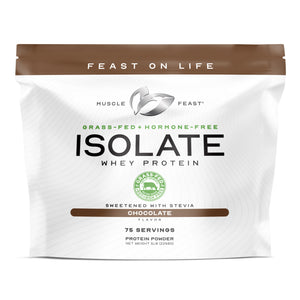Getting stronger isn’t just about lifting weights it’s about making sure the strength you build is useful in real life. The principle of specificity says your body improves at exactly what you practice. If you want training to carry over, your workouts need to look and feel like the tasks you want to be better at.
This idea is explained through two main frameworks:
- Strength–Endurance Continuum (S-EC): Heavy weights with low reps build maximum strength; lighter weights with higher reps build endurance and stamina.
- Dynamic Correspondence (DC): Training should match the movement patterns, speed, and timing of the actual skill or task.
Together, these ideas show how to build general strength and then shape it into useful performance.
1. Maximum Strength
Improving your one-rep max raises the ceiling of what you can do. Everyday tasks and lighter workouts feel easier because they use a smaller slice of your total strength.
2. Training Volume
High reps (10+) build endurance and improve recovery. Low reps with heavy weights build raw strength. Alternating phases of both keeps progress steady.
3. Training to Failure
Pushing every set to the point you can’t lift another rep isn’t necessary. Stopping with one or two reps left in the tank builds just as much strength, while protecting recovery and lowering injury risk.
4. Equalizing Work Doesn’t Reflect Real Life
Research often tries to match training volume between programs, but in practice, workouts are not identical. Progress comes from cycling intensity and volume sometimes heavy, sometimes lighter not from making everything equal.
5. The Strength–Endurance Continuum
Heavy, low-rep work improves strength. Lighter, higher-rep work improves endurance. Both matter. The key is balancing them over time so you keep getting stronger without losing stamina.
6. Amplitude and Direction of Movement
Strength carries over best when the exercise matches the range of motion and direction of force in the real movement. For example, squats train vertical force, which transfers well to jumping, sprinting, or lifting from the ground better than a machine that isolates just one muscle.
7. Accentuated Regions of Force
Different movements require peak effort at certain points like driving out of the blocks in a sprint or standing up from the bottom of a squat. Training methods like Olympic lifts, jump squats, or medicine ball throws hit these key moments more effectively than machines.
8. Dynamics of Effort
The body needs both strength and speed. Heavy weights train force at slow speeds. Lighter, explosive work trains quickness. The best results come from combining both ends of the force-velocity curve.
9. Rate and Timing of Maximum Force
Many tasks require force in less than half a second. Being strong isn’t enough if you can’t use it quickly. Heavy lifts provide the base, but explosive training like jumps, sprints, and kettlebell swings teaches the body to deliver strength on time.
10. Regimes of Muscular Work
Muscles don’t just contract one way. They shorten (concentric), lengthen (eccentric), hold (isometric), and spring (stretch–shortening cycle). Training across all these modes builds more complete strength and resilience.
11. Segmental Interrelation
The body works as a chain. Movements like cleans, carries, and get-ups train muscles and joints to coordinate together, the way real life demands. Isolation work has its place, but full-body lifts provide the greatest transfer.
12. Free Weights vs. Machines
Free weights better reflect real-world demands because they require balance, coordination, and ground reaction forces. Machines are helpful for rehab or safety, but for most people, training in three dimensions works best.
13. Volume and Recovery Balance
More isn’t always better. Piling on sets and reps without recovery eventually stalls progress. Training should wave up and down in intensity and volume, so the body adapts without burning out.
14. Specificity in Action
To improve, the training must line up with the goal. If you want more endurance, do higher reps. If you want power, add explosive lifts. If you want balance and durability, train movements that look like real life.
15. Putting It All Together
Specificity means building a broad base of strength, then shaping it to fit your goals. The continuum shows how reps and loads guide adaptation. Dynamic Correspondence shows how movement patterns and timing make that strength useful.
The takeaway is simple: train with intention, not randomness. Heavy work raises your ceiling. Light, high-rep work builds stamina. Explosive movements teach speed. Whole-body lifts tie it together. The more your training looks like the demands you face on the field, in the gym, or in daily life the better it will serve you.
Conclusion
Strength training is not one-size-fits-all. Specificity makes it personal and effective. Build your base with a mix of strength and endurance, then refine it with movements that mirror what you want to improve. Whether your goal is lifting heavier, moving faster, or simply staying strong and capable, the principle holds true: train for the life you want to live. FEAST ON LIFE
-Conrad RN
References
Stone, M. H., Sands, W. A., Stone, M. E., Haff, G. G., & Pierce, K. C. (2022). Training specificity for athletes: Emphasis on strength–power training—A narrative review. Journal of Functional Morphology and Kinesiology, 7(3), 102. https://doi.org/10.3390/jfmk7030102





